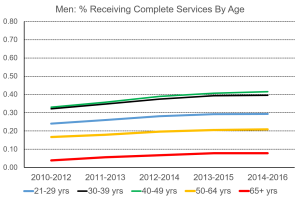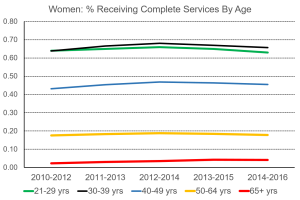Large numbers of Americans receive their health care through insurance and wellness plans sponsored by their employers. New work by Rundle and colleagues (full text here) describes a method that employers can use to analyze their medical claims data to determine whether their workforce is receiving a package of high-priority preventive services. The 2010 Patient Protection and Affordable Care Act (ACA) mandated that, other than certain “grandfathered” health care plans, all new health care policies, beginning on or after September 23 2010, must cover designated preventive health services without patient cost-sharing. Discussions of the ACA preventive services rule are often framed by noting that preventive health care services can help prevent nine of the top 10 leading causes of death and that annually 100,000 deaths could be prevented if persons received recommended preventive care.
Rundle and colleagues applied their method to 87 million person-years of medical claims data from the IBM Watson Health MarketScan data to set benchmarks for the current rate of receipt of preventive services. In the three-year period 2014 to 2016, 29% of men and 36% of women received all of the age and sex appropriate preventive health services at least once, and 33% of men and 13% of women received none of these services. The figures below show the percent of women and men, by age group, who received the complete package of high-priority preventive services by 3 year rolling windows.


Large employers routinely analyze de-identified medical claims data from employees and covered family members to monitor and plan for expenditures, to motivate adjustments to insurance and wellness plan offerings, and to identify employee population health needs. The analytical approach described by Rundle and colleagues can be integrated into routine analyses of medical claims data to monitor the delivery of high-priority preventive services. The utility of this approach is that it allows employers to assess continuously whether their health and wellness plans are under-performing in the delivery of these services. Employers that find that their health plans are falling short of these benchmarks can work with their vendors to increase the delivery of high priority preventive services.

